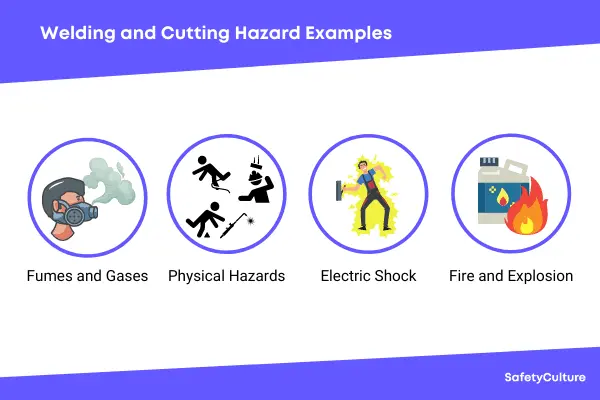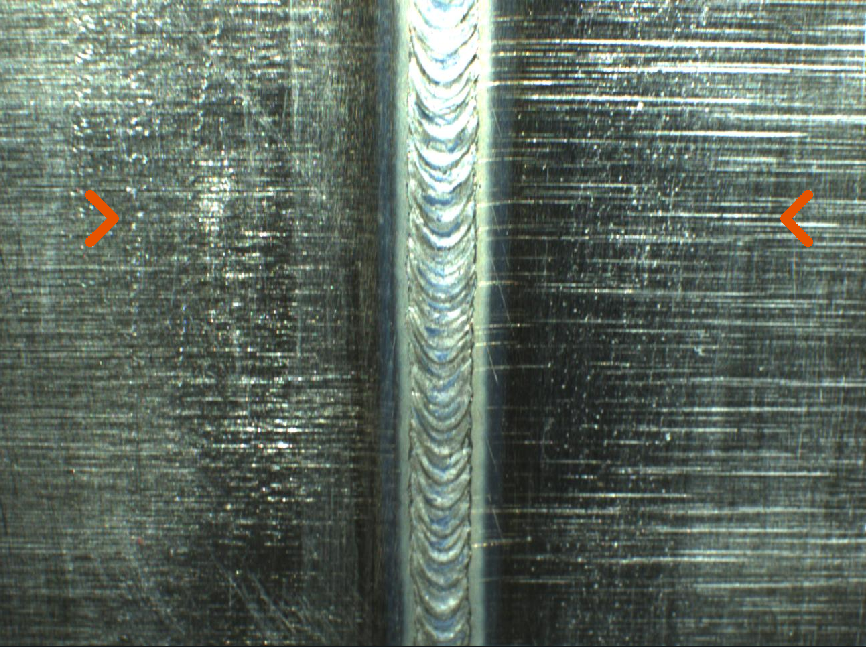How Welding Inspection Racine Makes Certain Security and Conformity
How Welding Inspection Racine Makes Certain Security and Conformity
Blog Article
Innovative Approaches to Fillet Weld Inspection and Testing: Enhancing Weld High Quality and Compliance Standards
In the world of welding, the quality and integrity of fillet welds play a vital role in making sure the architectural stability and reliability of different industrial parts. With the continuous drive for improved performance and conformity with rigid criteria, the exploration of ingenious approaches to fillet weld inspection and testing has become essential. As markets develop, the traditional methods may no much longer be enough in meeting the needs of modern welding applications. By welcoming innovative innovations and techniques, a brand-new horizon of opportunities arises in the realm of weld high quality assessment and adherence to conformity standards.
Advanced Non-Destructive Screening Approaches
Making use of advanced modern technologies, advanced non-destructive screening approaches play a vital function in guaranteeing the integrity and top quality of fillet welds. These methods, such as phased range ultrasonic screening (PAUT) and magnetic particle testing (MPT), offer thorough understandings right into the weld's internal framework without triggering any damage to the product. PAUT, for example, uses multiple ultrasonic elements to check the weld from numerous angles, providing a comprehensive visualization of prospective problems like absence of blend or fractures.
Similarly, MPT is effective in finding surface-breaking flaws by using an electromagnetic field and iron fragments to the weld location. This technique is especially valuable for determining interruptions that might compromise the weld's strength. By using these advanced non-destructive testing strategies, weld assessors can precisely evaluate the top quality of fillet welds, ensuring compliance with market standards and guidelines. The capacity to discover imperfections early not just improves weld high quality yet additionally stops pricey rework or failures in structural integrity, underscoring the relevance of these cutting-edge testing approaches in welding evaluations.
Robotics and Automation in Examination
The integration of robotics and automation has transformed the inspection process for fillet welds, boosting efficiency and precision in quality assessment. Robotics supply precise control and repeatability in evaluating welds, ensuring constant and trustworthy results. Automated systems can be set to adhere to certain inspection paths, guaranteeing extensive coverage of welds and minimizing the risk of human mistake.
Robot inspection systems outfitted with sophisticated sensing units can spot and gauge weld attributes with high precision, giving comprehensive information for evaluation. These systems can identify issues such as cracks, lack of combination, and porosity, allowing punctual corrective activities to be taken. In addition, robotics and automation permit real-time data collection and analysis, giving immediate feedback to operators and helping with quick decision-making procedures.
In addition, the use of robotics and automation in fillet weld evaluation improves total productivity by lowering assessment times and enhancing evaluation throughput. By improving the evaluation process, suppliers can guarantee weld high quality and conformity criteria are fulfilled efficiently, inevitably bring about cost financial savings and enhanced product high quality.
Using Artificial Intelligence for Analysis
Expert system plays an essential role in improving the effectiveness and accuracy of evaluation in fillet weld inspection procedures. By harnessing the power of AI, examiners can improve the evaluation of weld high quality and conformity requirements, bring about much more reputable and specific results. AI algorithms can quickly process large amounts of information from weld inspections, discovering issues or inconsistencies that may be testing to recognize with the naked click this link eye. This sophisticated modern technology makes it possible for real-time monitoring of weld quality, permitting prompt restorative actions to be taken if any problems are detected.
Additionally, AI systems can pick up from previous inspection data, continuously boosting their capacity to determine potential flaws and inconsistencies in fillet welds. This flexible discovering ability boosts the general quality assurance process, decreasing the likelihood of human mistake and guaranteeing that welds meet the needed requirements. By incorporating expert system into fillet weld evaluation, industries can achieve check my source greater levels of performance, uniformity, and conformity in their examination practices.
Portable Tools for On-Site Assessment
 Enhancing field assessment performance, the fostering of portable devices changes on-site analysis procedures for fillet welds. These devices offer versatility and comfort, permitting inspectors to perform detailed examinations in numerous areas, including difficult or remote settings. Mobile tools such as ultrasonic testing gadgets, magnetic bit examination equipment, and electronic radiography systems supply real-time data and high-resolution imaging abilities, allowing fast decision-making and instant comments on weld top quality.
Enhancing field assessment performance, the fostering of portable devices changes on-site analysis procedures for fillet welds. These devices offer versatility and comfort, permitting inspectors to perform detailed examinations in numerous areas, including difficult or remote settings. Mobile tools such as ultrasonic testing gadgets, magnetic bit examination equipment, and electronic radiography systems supply real-time data and high-resolution imaging abilities, allowing fast decision-making and instant comments on weld top quality.One significant advantage of portable tools is their capability to improve evaluation treatments, decreasing downtime and boosting general performance. Assessors can easily transfer these tools to various job sites, eliminating the requirement for transferring heavy equipment or elements to off-site centers. Furthermore, the portability of these devices promotes cost-effectiveness by minimizing transport expenses and accelerating assessment timelines.
In addition, the usage of mobile devices for on-site assessment advertises proactive top quality control steps, as examiners can without delay identify and address any potential welding issues or inconsistencies. By including these innovative modern technologies into on-site examination methods, welding professionals can make sure conformity with industry standards and boost weld top quality, ultimately resulting in boosted structural integrity and safety and security in numerous welding applications.
Assimilation of Information Administration Equipment
Having maximized on-site evaluation procedures through the application of mobile devices, the next phase involves the seamless assimilation of data management systems to further boost effectiveness and information analysis capabilities in fillet weld evaluation and testing. Welding Inspection Racine. By incorporating data administration systems right into the inspection process, organizations home can streamline information collection, storage space, and analysis. This combination permits for real-time monitoring of weld quality, instant identification of flaws, and prompt decision-making to fix any type of problems that may develop throughout the evaluation process
Information administration systems play a critical function in centralizing assessment data, helping with easy accessibility for licensed personnel, and guaranteeing data honesty and protection. With the integration of these systems, assessors can generate thorough records, track historic information for trend analysis, and enhance overall procedure efficiency. The assimilation of data management systems enables smooth interaction in between various stakeholders included in the examination process, cultivating partnership and boosting general top quality control steps. Ultimately, the integration of information monitoring systems offers to elevate the requirements of fillet weld inspection and testing, ensuring compliance with sector policies and enhancing weld high quality.
Conclusion
In verdict, ingenious strategies to fillet weld evaluation and testing have dramatically enhanced weld high quality and conformity requirements. Advanced non-destructive screening methods, robotics, automation, man-made knowledge, mobile tools, and information administration systems have actually reinvented the means weld inspections are carried out. By utilizing these modern technologies, industries can make sure that welds satisfy the needed quality requirements and policies, eventually improving general effectiveness and safety and security in welding processes.

By utilizing these innovative non-destructive screening techniques, weld inspectors can precisely assess the quality of fillet welds, ensuring conformity with sector criteria and regulations. Portable tools such as ultrasonic testing tools, magnetic particle examination devices, and digital radiography systems offer real-time data and high-resolution imaging abilities, making it possible for quick decision-making and instant feedback on weld top quality.
Having optimized on-site assessment procedures through the utilization of mobile tools, the next phase involves the smooth integration of data monitoring systems to further boost effectiveness and information analysis abilities in fillet weld examination and testing (Welding Inspection Racine). Inevitably, the integration of information administration systems offers to raise the requirements of fillet weld evaluation and testing, making sure compliance with sector policies and improving weld quality
 In final thought, cutting-edge methods to fillet weld examination and testing have significantly improved weld quality and compliance standards.
In final thought, cutting-edge methods to fillet weld examination and testing have significantly improved weld quality and compliance standards.Report this page